Introduction
Energy can be found all around us. It is used to produce food, for transportation, manufacture goods and power our electronic items. It is the basic foundation of our daily lives. It powers our lives. Energy can be produced in many different ways. Today, fossil fuels produce most of the world’s energy. However, fossil fuels produce large quantities of carbon dioxide which causes climate change. They are also a contributor to air pollution. Over the years, the effects of climate change such as natural disasters, global warming and rising seawater levels can be seen across the world.
We tried to stray away from fossil fuels by using low-carbon sources of energy such as nuclear reactions and renewable sources such as wind, waves, geothermal heat and sunlight. However, they each have their own limitations. Nuclear reaction methods, such as nuclear fission, produce nuclear waste which is toxic and harmful to us and the environment. Renewable sources, on the other hand, are often dependent on the weather and climate which means that they can never produce energy 100% of the time.
As climate change continues at an alarming rate, scientists and researchers have tried looking for an alternative source of energy that is sustainable and efficient. To commence their search for an innovative alternative, they looked to the stars and found their answer. The biggest star of them all, the Sun. The question then arises: How does the sun produce massive amounts of energy and how can we harness and utilise that energy? The answer is simple – Nuclear Fusion. In essence, nuclear fusion technology allows us to construct a “Mini Sun” on Earth by merging two light nuclei which in turn produces energy.
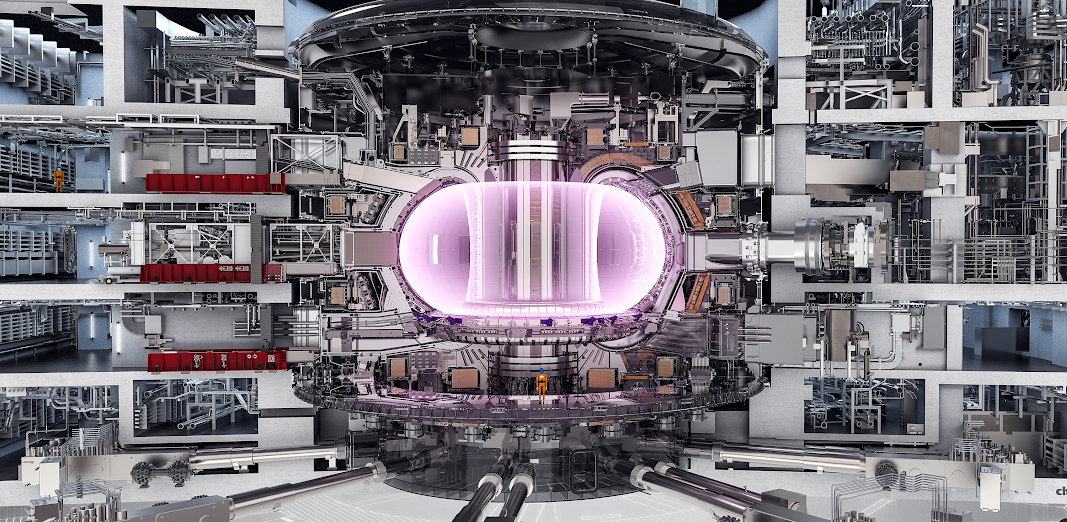
According to the International Thermonuclear Experimental Reactor (ITER), an international nuclear fusion research project, the nuclear fusion reaction has the potential to produce 4 million times more energy than the amount produced from burning fossil fuels. The environmental costs of burning fossil fuels, such as the emission of air pollutants and carbon dioxide are obsolete. Though this technology may sound new to some, nuclear fusion is a concept that has been in the works since the 1950s.
So what is nuclear fusion and how does it work?
Nuclear fusion, not to be confused with nuclear fission, is a nuclear reaction whereby 2 light nuclei are combined to form a heavier nucleus. This process produces an enormous amount of energy. Nuclear fission on the other hand is the splitting of an atom. You may have heard about Nuclear fission from the Chernobyl Nuclear Power Plant and the Fukushima Nuclear Power Plant incident. Fusion plants would be able to convert the large energy released by the fusion reaction into electricity. The most efficient fusion reaction we know so far is the reaction between two hydrogen isotopes (definition: isotopes have the same number of protons but a different number of neutrons), deuterium (D) and tritium (T) (ITER, 2021).
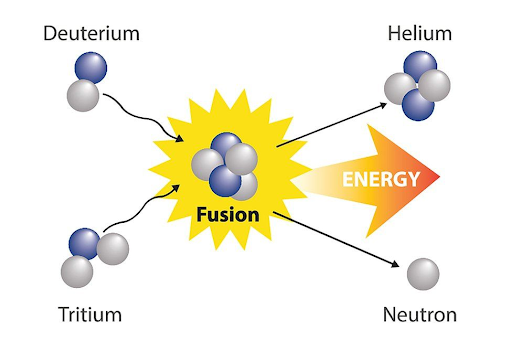
When deuterium and tritium are fused, it produces helium which is a heavier element. However, during the fusion process, the mass of the resultant helium atom does not equal to the initial atoms. According to the law of conservation of mass, the mass of chemical components at the beginning of the reaction must be equal to the mass of the chemical components at the end of the reaction. So where did the remaining mass go? According to Einstein’s famous equation, E =mc2, mass and energy can be converted to one another under the right conditions. Thus, the leftover mass is converted into energy. The loss of mass multiplied by the square of the speed of light, resulting in a large amount of energy.
How can we fuse 2 nuclei together?
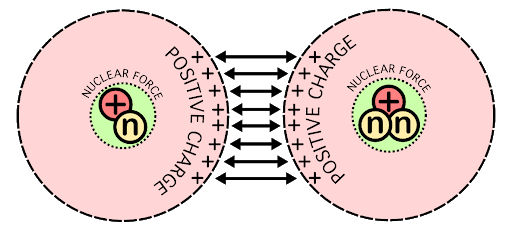
There is one major barrier that is preventing fusion from occurring. This barrier is known as the Coulomb barrier and it is due to Coulomb repulsion as described in Coulomb’s law. It is the repulsive force between 2 positive charges. Similar to magnets, like charges repel one another. At very high temperatures, the electrons are taken away from the atoms forming a sea of nuclei and electrons called a plasma. Since nuclei are positively charged, it is very difficult to get them close enough to collide with one another to fuse them. Therefore, the repulsive force of the nuclei would need to be overcome. According to the kinetic theory of matter, the speed of the nuclei is proportional to the temperature. Therefore, when heated to extremely high temperatures, the nuclei would move at very high speeds. The high velocity allows the nuclei to overcome the repulsive force, thereby allowing them to fuse to produce massive amounts of energy. According to EUROfusion, the temperature needed to achieve deuterium-tritium (DT) fusion is approximately 100 million Kelvin.
However, the temperature needed to achieve nuclear fusion on the sun is only 15 million Kelvin (Arnoux, 2014), a significantly lower temperature compared to what we have to achieve here on Earth. This is simply due to density. At the sun’s core, the pressure is extremely high causing the number of nuclei within a given volume to be high as well. This increases the probability and frequency of the nuclei colliding with one another. Extremely high pressure also allows the nuclei to overcome the Coulomb barrier as they are mechanically forced into one another.
Analogy: The state of the matter is dependent on temperature and pressure. Therefore, we can theoretically convert water from liquid to solid at room temperature if we squeeze them hard enough and cause the molecules to come together to form a solid and orderly pattern. Though, it is very difficult to achieve a pressure high enough for this phenomenon to occur.
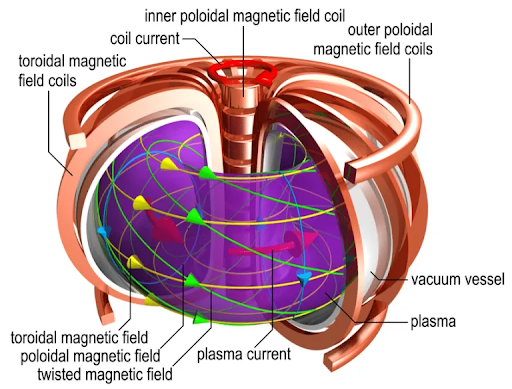
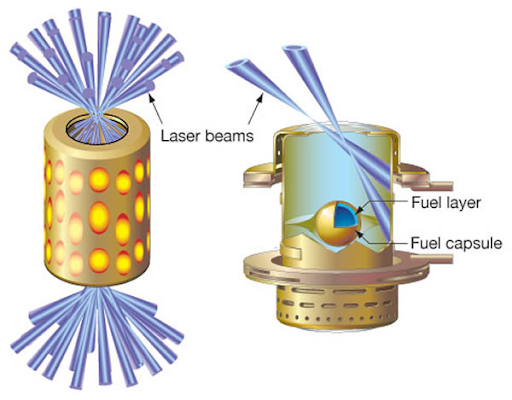
Today, 2 methods are being studied. They are magnetic confinement fusion (MCF) and inertial confinement fusion (ICF). According to the world nuclear association (2021), MCF uses magnetic fields that are strong enough to heat, compress and contain hydrogen plasma. ICF on the other hand compresses and heats the hydrogen plasma using laser or ions beams that are directed onto the surface of the fusion fuel pellet which is only a few millimetres in diameter.
What does nuclear fusion bring to the table?
Meeting demands and fewer emissions
Though still under research, ITER aims to produce 500 MW of power from an input of 50 MW. Nuclear fusion could be our solution to all the electricity demands in the world and reduce the environmental impacts that current sources of energy such as fossil fuel and nuclear fission cause.
Abudant fuel
As mentioned previously, the fuel needed for fusion is deuterium and tritium which are isotopes of hydrogen. Hydrogen is the most abundant element in the universe. Deuterium can be found in seawater. A gallon of seawater can produce as much energy as 300 gallons of gasoline (Lanctot, 2021). (Due to the small amount of fuel that is needed for MCF- about less than 4 grams (ITER, 2021), we would have enough fuel to power for thousands or even millions of years. Tritium can be obtained from lithium which is another material that is abundant in nature.
Safety
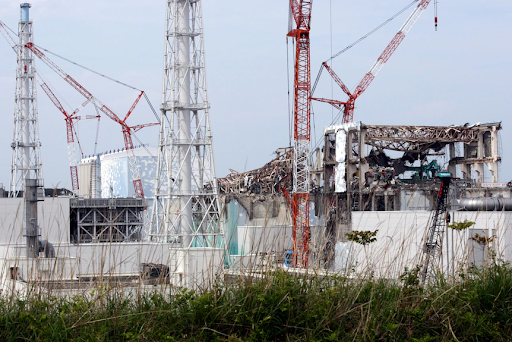
With the fusion process, there is no risk of a meltdown like the Fukushima incident. To obtain plasma for fusion, the fuel would be needed to be heated to an extremely high temperature. In an unlikely case where there are disturbances that cause the fusion reaction to become unstable, the plasma will cool down quickly and the reaction would stop. Additionally, the quantity of fuel used is small and the fusion processes rely on the continuous input of fuel. Therefore, similar to fuel and a flame, the reaction would stop as soon as it runs out of fuel.
Why is nuclear fusion not implemented yet?
Energy in vs energy out
Unfortunately, though a lot of research has been done, nuclear fusion is still not a feasible solution. Due to the large amounts of energy needed to heat the fuel to a high enough temperature to enable fusion to take place, the input of the energy used to produce this far exceeds the energy output. The plasma also has to be maintained at a specific temperature for a long enough duration for the fusion reaction to take place. Maintaining such a high temperature is no easy feat.
Radiation and radioactive waste
Tritium is a radioactive material as it emits charged particles called beta particles from its nucleus during radioactive decay. Thankfully, the amount of tritium needed for a DT fusion is low and radiation from beta particles is very weak and can be stopped by a thin sheet of metal. Tritium also has a short half life. This means that it will decay quickly and will become stable. Thus, posing very little long term environmental risk. According to the National Nuclear Security Administration, tritium takes only 12.3 years to decay to half the original amount while uranium takes 4.5 billion years. At low amounts and intensity, beta particles pose no serious threat to humans and the environment. However, it can pose serious health risks in high amounts.
Another issue is the effects of neutron bombardment on the materials of the reactor. This will cause short or medium-term radioactive waste. As the high energy neutrons bombard the materials, some components would turn radioactive due to the activation of the structural materials. Researchers have to either find ways to safely dispose of the radioactive material or find materials that can better withstand the high energy neutrons. Though, it is important to note that these radioactive components take 50-100 years to decay which is significantly lower than the radioactive waste produced from fission power plants which could last for thousands of years (EUROfusion, 2021).
Cost
As nuclear fusion is a relatively new technology, it requires a high initial cost in order to manufacture the reactor. This makes this energy source inaccessible for commercial use. There are also additional costs being incurred due to the high amounts of energy needed to produce plasma and proper handling and disposal of radioactive waste. Therefore, other sources of energy tend to be more economical and viable in comparison to nuclear fusion.
Quenches
Fusion reactor requires strong magnetic fields to contain the plasma which can be produced using electromagnets. Naturally, there would be electrical resistance by the material. To curb this, the material is cooled to a very low temperature (close to absolute zero) to form superconductors. Superconductors have zero electrical resistance, allowing high currents to flow through and produce a strong magnetic field. Superconductivity can be maintained as long as the conditions are met. When these conditions are not met, electrical resistance would set in causing a process known as quenching. Quenching causes the voltage, temperature and mechanical stresses to increase resulting in serious irreversible damage to the reactor and systems. To reduce the effects of quenching, the research team at ITER is working on a system that can detect and extract the high energy that is produced during quenching.
Conclusion
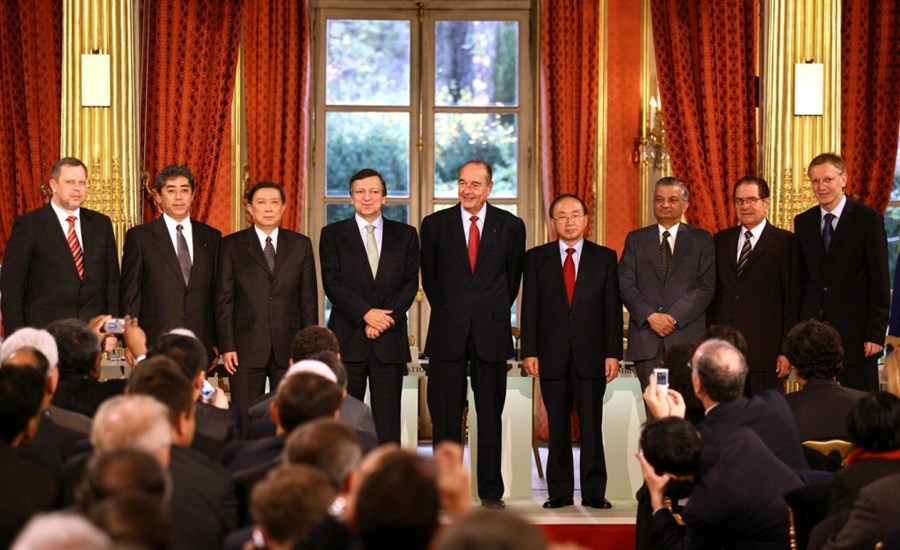
With the continuous growth in population and advancement in technology, the global consumption of energy would continue to increase as well. Furthermore, with the ever-growing threat of climate change, we quickly need to find a way to create large amounts of energy that is clean and sustainable that is able to meet the demands of tomorrow. In order for us to successfully champion the move towards nuclear fusion, it requires the collective effort of nations across the globe. The first step needed to embark on this journey is for us as a society to recognise the issue of climate change, and creating a sustainable energy source is vital in ensuring that our ever-growing energy demands are met for generations to come. Due to the high initial costs required in the research and development of nuclear fusion, monetary support from Governments and Investors is needed.
Investors tend to stray away from nuclear fusion due to the high cost of research and uncertainty that comes with nuclear fusion. However, just like any new technology, lots of money would be required initially for research and development. With the knowledge that is gained from research and development, we can find ways to cut cost by using more efficient processes and better materials, saving money in the long run. Essentially, it is a 2-way street. Thankfully, 35 nations are collaborating and working together in project ITER which aims to create the world’s largest fusion reactor.

We also have to try and change the public’s view of nuclear energy. This won’t be easy. With past catastrophic nuclear disasters, people do not feel safe living and working near a nuclear reactor. It is important that we focus on the safety aspect of nuclear power to convince the public that nuclear is the way forward. The benefits that come from nuclear energy is too huge to be ignored.
For now, we are still a long way from making nuclear fusion commercially viable to be implemented. There is still a lot more things we need to learn and improve before we can confidently say that nuclear fusion is safe, clean, sustainable and is the energy source of tomorrow. Nonetheless, research & development has given us a greater knowledge of nuclear power, a better understanding of materials and many more. We were blinded by the fact that we haven’t been able to make nuclear fusion a viable option which made us fail to realise the knowledge we have gain in our path to achieving nuclear fusion power. We may not be able to obtain a method to produce unlimited energy in our lifetime. Still, the bright minds of today are carrying the necessary work so that the children of tomorrow will be able to find the solution to unlimited energy.
References
Arnoux, R. (2014, February 20). Hotter than the Sun. https://www.iter.org/mag/2/18
Dulon, K. (2013, August 26). 3,000 sensors for detecting the quench. https://www.iter.org/newsline/278/1652
EUROfusion. (2014). Fusion Conditions – Attaining perfect fusion conditions. https://www.euro-fusion.org/fusion/fusion-conditions/
ITER. (n.d.-a). Advantages of fusion. Retrieved March 19, 2021, from https://www.iter.org/sci/Fusion#:~:text=The%20following%20advantages%20make%20fusion,reactions%20(at%20equal%20mass)
ITER. (n.d.-b). Fusion. Retrieved March 19, 2021, from https://www.iter.org/sci/whatisfusion
ITER. (n.d.-c). Safety and Environment. Retrieved March 19, 2021, from https://www.iter.org/mach/safety#:~:text=The%20fundamental%20differences%20in%20the,grams)%20at%20any%20given%20moment.
Kurzgesagt – In a Nutshell. (2016). Fusion Power Explained – Future or Failure [YouTube Video]. In YouTube. https://www.youtube.com/watch?v=mZsaaturR6E&t=120s
Lanctot, M. (2021). DOE Explains…Nuclear Fusion Reactions. U.S. Department of Energy, Office of Science. Energy.gov. https://www.energy.gov/science/doe-explainsnuclear-fusion-reactions
Lumen Learning. (2018). Fusion | Physics. Lumenlearning.com. https://courses.lumenlearning.com/physics/chapter/32-5-fusion/
National Nuclear Security Administration. (n.d.). Tritium. https://www.energy.gov/sites/prod/files/migrated/nnsa/2017/11/f42/Tritium%20Fact%20Sheet%20Oct%2017%202011.pdf
NOVA. (n.d.). Einstein’s Big Idea. Pbs.org. Retrieved March 19, 2021, from https://www.pbs.org/wgbh/nova/einstein/lrk-hand-emc2expl.html#:~:text=Einstein’s%20Big%20Idea%20homepage,forms%20of%20the%20same%20thing.
Overton, T. (2020, June 1). Fusion Energy Is Coming, and Maybe Sooner Than You Think. POWER Magazine; https://www.powermag.com/fusion-energy-is-coming-and-maybe-sooner-than-you-think/
Verlini, G. (2010, October 8). Nuclear Fusion Basics. International Atomic Energy Agency; https://www.iaea.org/newscenter/news/nuclear-fusion-basics#:~:text=The%20potential%20advantages%20of%20nuclear,produced%20through%20fusion%20are%20minimal.
World Nuclear Association. (2021, February). Nuclear Fusion. World-Nuclear.org. https://www.world-nuclear.org/information-library/current-and-future-generation/nuclear-fusion-power.aspx






